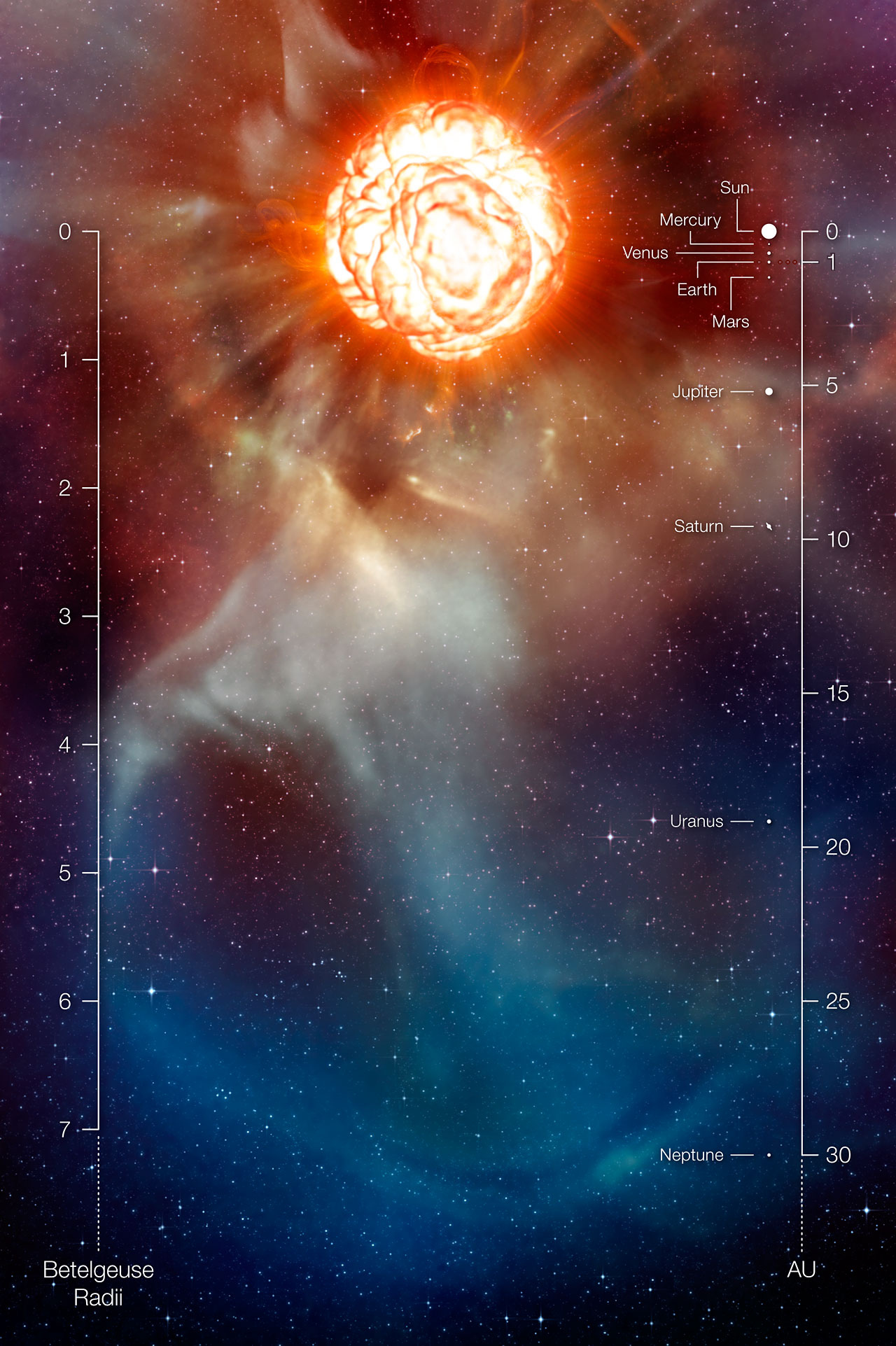Ann wrote:chrissxmiss wrote:I thought that R136a1 was the largest known star..? Or does it just have a different name?
One of the stars in the Tarantula cluster is indeed believed to be the most massive star that we know of in the Local Group of galaxies, but it isn't the biggest. It is a hot blue supergiant, but blue stars can never get as big as the biggest red ones.
<<VY Canis Majoris, a red hypergiant star at an estimated 2000 solar diameters, is the largest known star in volume, (it is also ~36 times more massive than the sun). VY CMa is a high-luminosity M star with an effective temperature of about 3,000 K, placing it at the upper-right hand corner of the Hertzsprung–Russell diagram and suggesting that it is a complexly created star. The star has been discovered to be very unstable, having thrown off much of its mass into its surrounding nebula. Astronomers, with the help of the Hubble Space Telescope, have predicted that the VY Canis Majoris will be destroyed, as a supernova, in less than 100,000 years.>>
<<The Pistol Star, a blue hypergiant with an estimated luminosity 4 million times that of the Sun, is one of the most luminous known stars (it is 125 times more massive and 320 times larger than the sun). It is one of many massive young stars in the Quintuplet cluster in the Galactic Center region. The 18,000 K star is thought to have ejected almost 10 solar masses of material in giant outbursts perhaps 4,000 to 6,000 years ago. Its stellar wind is over 10 billion times stronger than the Sun's. Its exact age and future are not known, but it is expected to end in a brilliant supernova or hypernova in 1 to 3 million years.>>
<<R136a1, a blue hypergiant star at an estimated 265 solar masses, is the most massive star known, (it is also ~36 times larger than the sun). R136a1 is a Wolf-Rayet star with surface temperature over 50,000 K. Like other stars that are close to the Eddington limit, R136a1 has been shedding a large fraction of its initial mass through a continuous stellar wind. Astronomers suspect that such an enormous star will perish as a hypernova, a stellar explosion with an energy of over 100 supernovae. The star may also die prematurely long before its core could collapse naturally from lack of fuel as a "pair instability supernova". Hydrogen-fusing cores should create large numbers of electron–positron pairs, which drop the thermal pressure present within the star to the point a partial collapse occurs. If R136a1 underwent such an explosion it would fail to leave behind a black hole and instead the dozen solar masses of iron within its core would be blown out into the interstellar medium as a supernova remnant.>>



